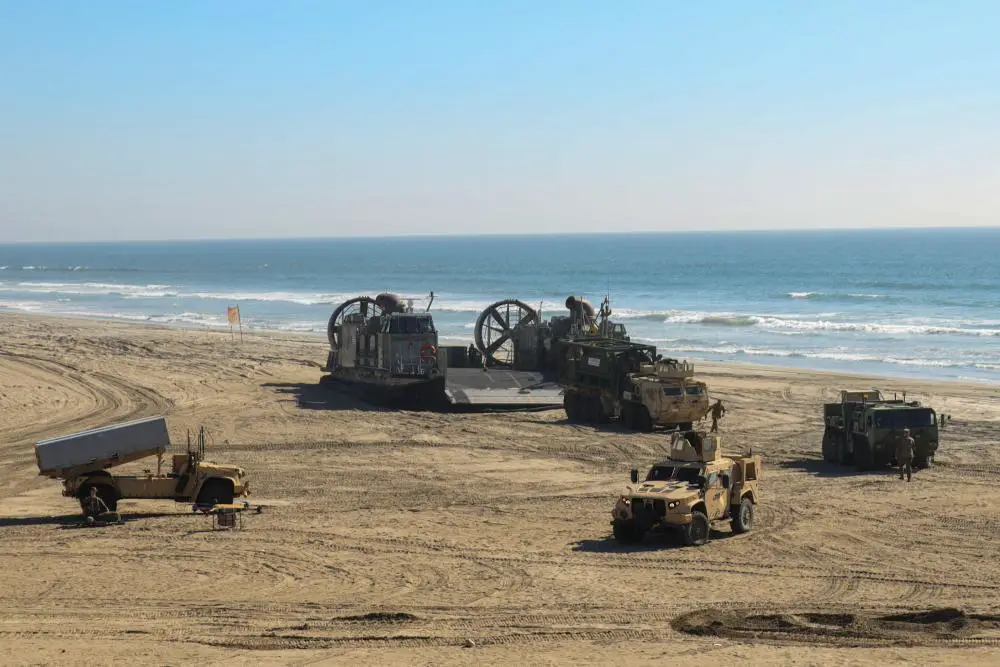U.S. Marines with I Marine Expeditionary Force, deploy a Navy Marine Expeditionary Ship Interdiction System (NMESIS) during Project Convergence 2022 (PC22) on Marine Corps Base Camp Pendleton, California, October 18, 2022. The beach landing is an experimentation phase of the exercise that showcased the NMESIS capabilities and explore scenarios related to the employment of All-Service offensive fires and effects. PC22 experiments with All-Service logistics in a contested environment with a focus on support of the NMESIS. Project Convergence is the Joint Force experimenting with speed, range, and decision dominance to achieve overmatch and inform the Joint Warfighting Concept and Joint All Domain Command and Control.
The U.S. Marine Corps has launched a plan to integrate the Naval Strike Missile (NSM) on unmanned Oshkosh Joint Light Tactical Vehicle (JLTV) ROGUE Fires vehicle to enhance its anti-ship capability in support of sea control and sea denial missions. The development of a Ground-Based Anti-Ship Missile (GBASM) capability is the Marine Corps’ highest ground modernization priority. The U.S. Marine Corps’ GBASM solution is the Navy Marine Expeditionary Ship Interdiction System (NMESIS), consisting of an unmanned JLTV-based mobile launch platform and Naval Strike Missiles (NSM) launcher unit. For a near-term solution to gain the ability to control the seas from ashore, the Marines will pair the Naval Strike Missile the same anti-ship missile going on the U.S. Navy Littoral Combat Ships.

The Naval Strike Missile (NSM) is an anti-ship and land-attack missile developed by the Norwegian company Kongsberg Defence & Aerospace (KDA). The original Norwegian name was Nytt sjomalsmissil (literally New sea target missile, indicating that it is the successor of the Penguin missile); the English marketing name Naval Strike Missile was adopted later. The missile will weigh slightly more than 400 kg (880 lb) and have a range of more than 185 km (100 nm). The usage of a high strength titanium alloy blast/fragmentation warhead from TDW is in line with the modern lightweight design and features insensitive high-explosive. The ROGUE Fires vehicle to enhance its anti-ship capability in support of sea control and sea denial mission.
The Marine Corps’ top modernization priority is fulfilling the requirement for a ground-based anti-ship missile capability. The operational requirement for this ship-killing capability is a relatively new development stemming from the Commandant’s Planning Guidance and the Corps’ Force Design 2030 efforts. When integrated into sensor and communication networks supporting a naval or maritime kill chain and synchronized with the employment of other missile systems, the Marine Corps’ medium-range missile battery will serve as a component of the Naval expeditionary force’s stand-in force in support of the naval sea control effort. The Expeditionary Advance Base Operations (EABO) concept is leaving China “just scratching their head” trying to figure out how to counter U.S. naval force advancements.
















